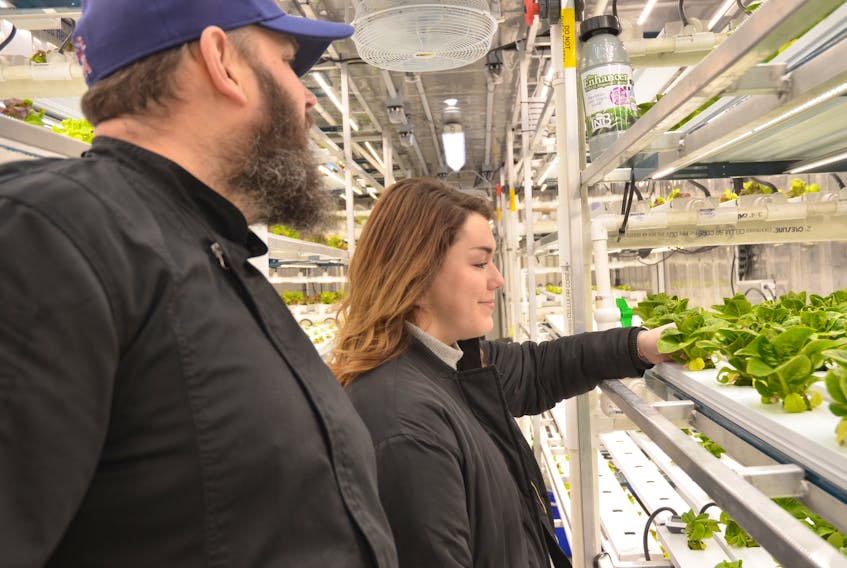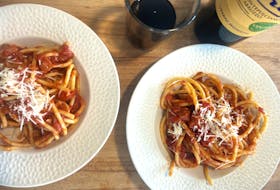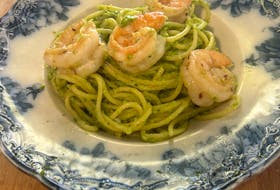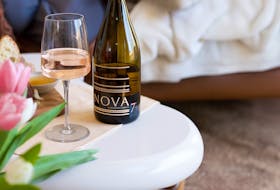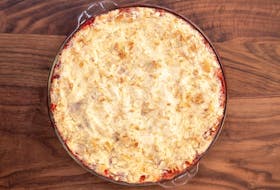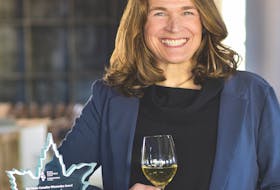WOLFVILLE, N.S. — Acadia University is growing greens in February.
Last fall, the university installed a Growcer unit. It is a repurposed shipping container that has been equipped with hydroponic growing equipment. This unit was installed just behind the cafeteria, allowing the staff and students easy access to pick the fresh greens and herbs year-round.
Sustainability co-ordinator Jodie Noiles says this project is a partnership between the university’s food-service provider, Chartwells, and the campus sustainability office. The project took about a year-and-a-half of planning.

“It’s based on our food plan for Acadia, which focuses on healthy, sustainable and affordable food,” she said. “It’s an opportunity to showcase innovations in food services and see what’s possible on a campus environment.”
The Growcer unit will allow the university to grow hundreds of pounds of greens a month year-round, partly to supply the kitchen, but also to feed the university’s educational and research interests.
“Being an education facility interested in teaching and research, we want to use this as a living lab on campus,” she said. “We can use it to experiment with different ways of growing.”
Noiles added that involving students in food production is part of Acadia’s heritage. Acadia was once a working farm growing its own livestock and vegetables. Students worked on the farm in exchange for room and board on campus until about 1956. This modern unit enhances initiatives such as the community farm located on the other side of the campus.
Noiles says the implications for research and education grow beyond the campus.
“The units were designed for northern climates, so here it is February and we are growing fresh greens outside our dining hall,” she says. “These units provide growing capacity for remote communities where they lack the soil and temperatures, and seasons to grow food.”

She added that the containers also show what’s possible for growing fresh produce in urban environments with no room for large greenhouses. These containers are climate controlled and take up less room and require no staff.
The unit was ordered through a company in Ontario, the container itself was retired from use on the west coast and shipped ready to go.
Executive chef Peter Welton executive chef says that once the unit is running at full capacity it will probably supply about 181 kilograms of greens for the dining hall each month. Given the large number of students they feed every day, he would like a few more of these units.
It’s not intended to supply all of the fresh produce needed for the hall, but it will play an important part of the educational component for many students.
“Unless you grow up in a rural community, you probably don’t know where food comes from,” said Welton. “People here in the Valley know, or they know someone who grows food. But students who come here from the cities and other countries don’t know. They are able to look out the window and see where some of their food is grown.”

Emma Kaye, a nutrition student, says that being involved in this research is giving her a unique perspective on food production, and how it plays an integral role in health and wellness.
“I find this really interesting because a lot of people involved in nutrition don’t know how to plant and grow food,” she said. “I’ve worked in community gardens, but this is different. When I graduate, I would like to work as a dietitian, in food security.”
Ten per cent of the greens harvested from the Growcer are being donated to the student union food bank. Two campus give-aways of “Lettuce Help” have been very popular, and the project also supplies other non-profit groups with fresh greens.
The unit comes completely equipped to grow, with shelving, seeds and a climate control and monitoring system. Once the pad and power is in place, they just add water and the farm in a box starts to grow.
“It’s amazing to see how food production can be done in this day and age,” she said.

